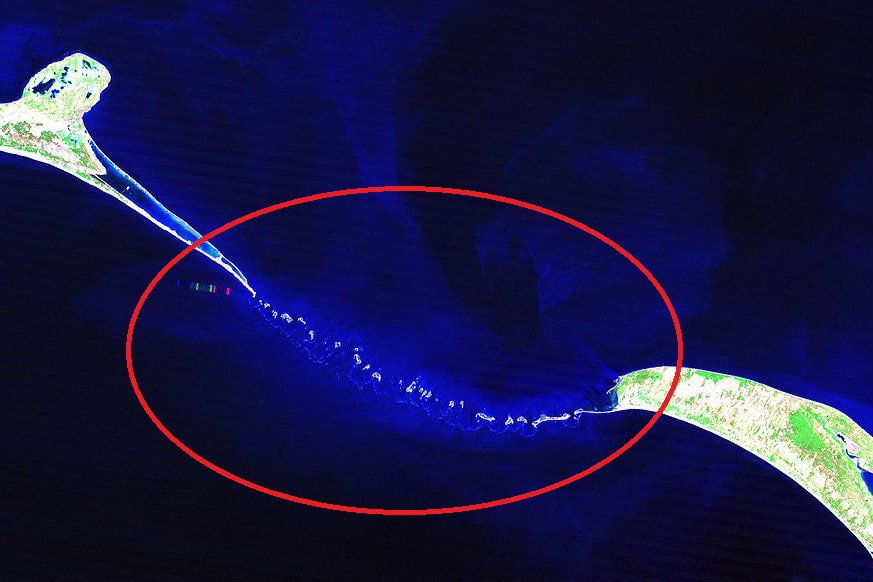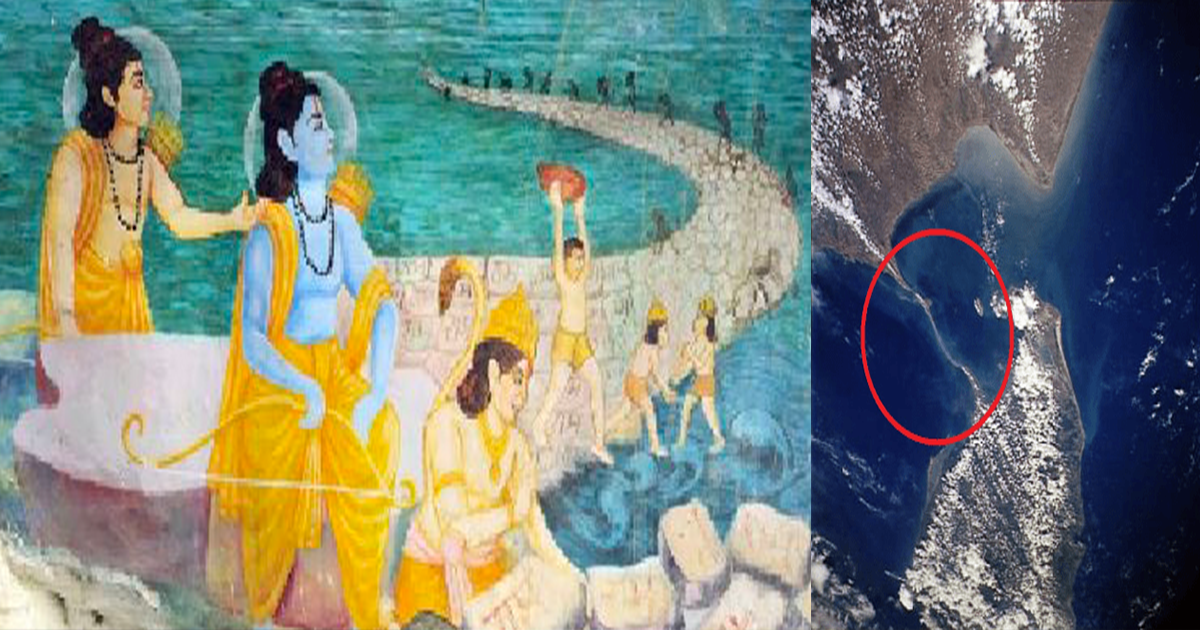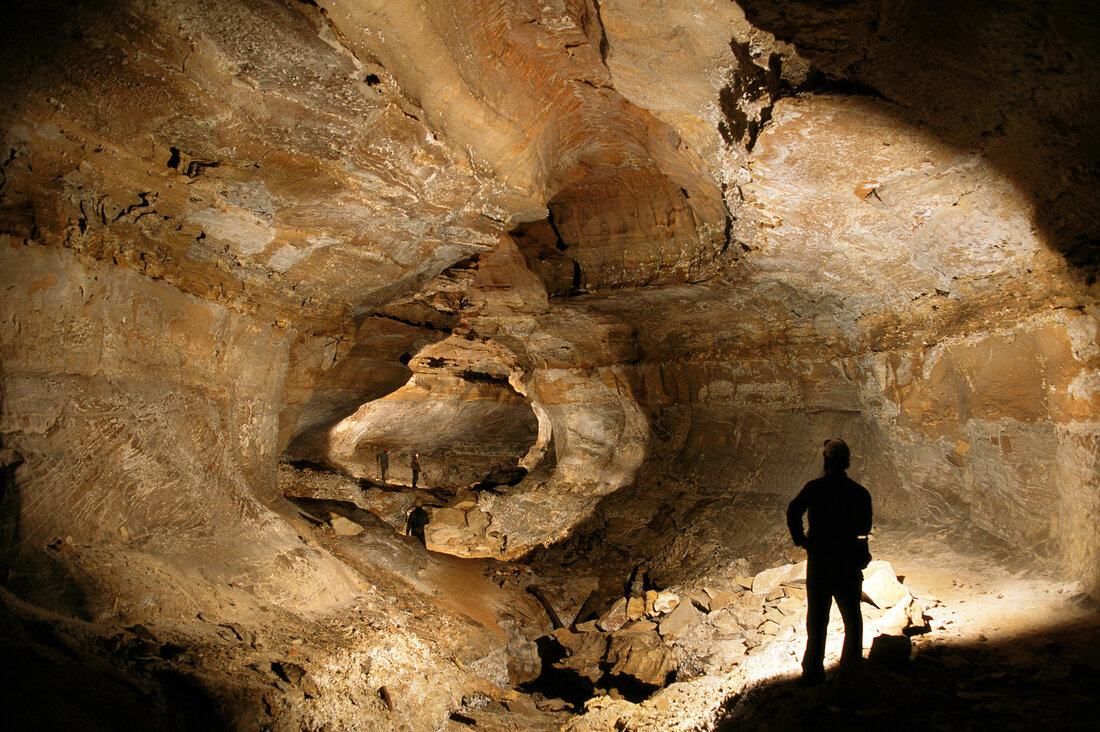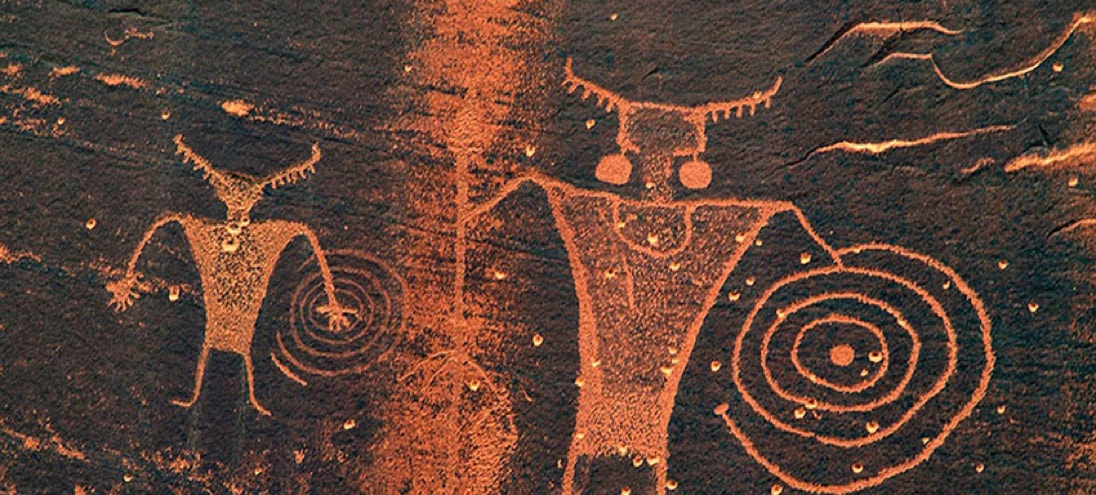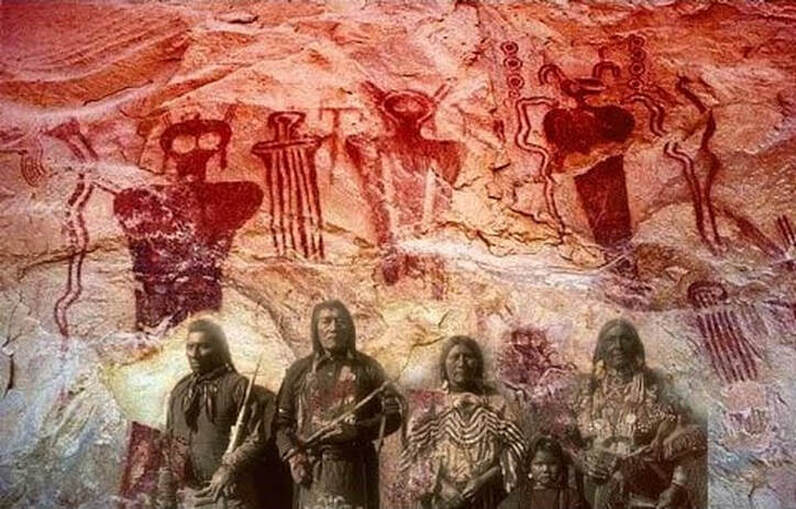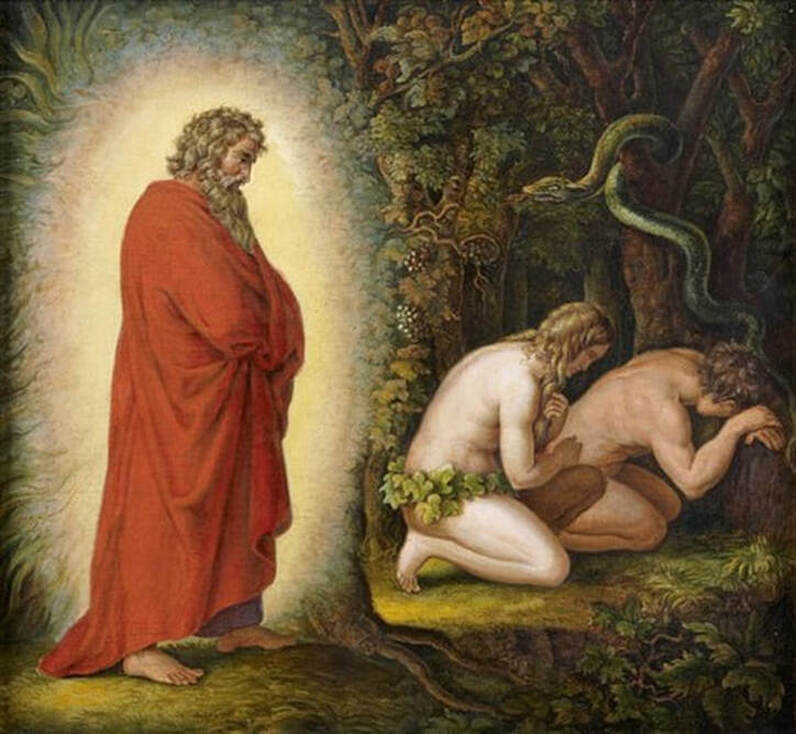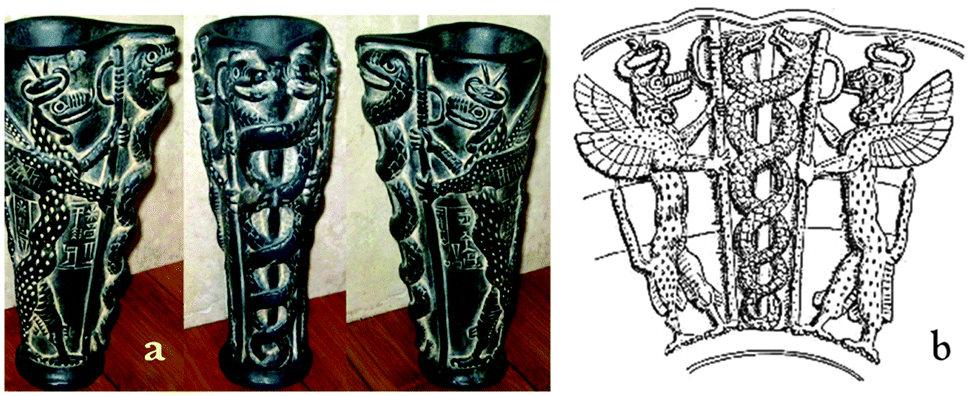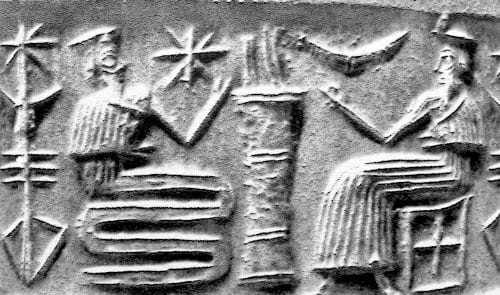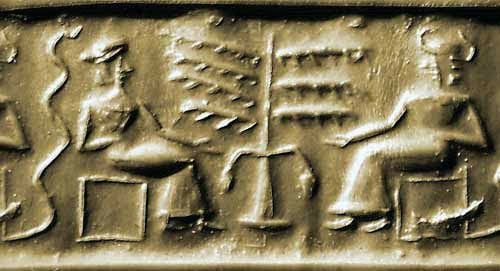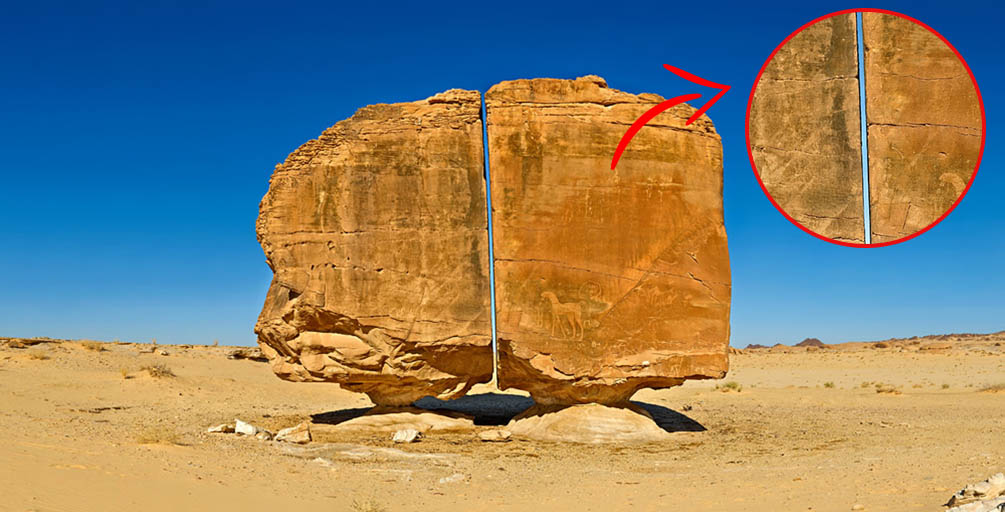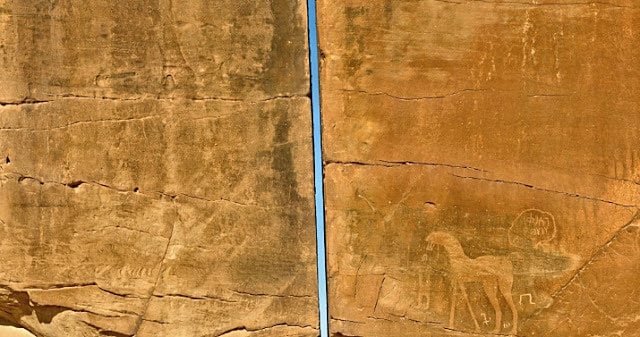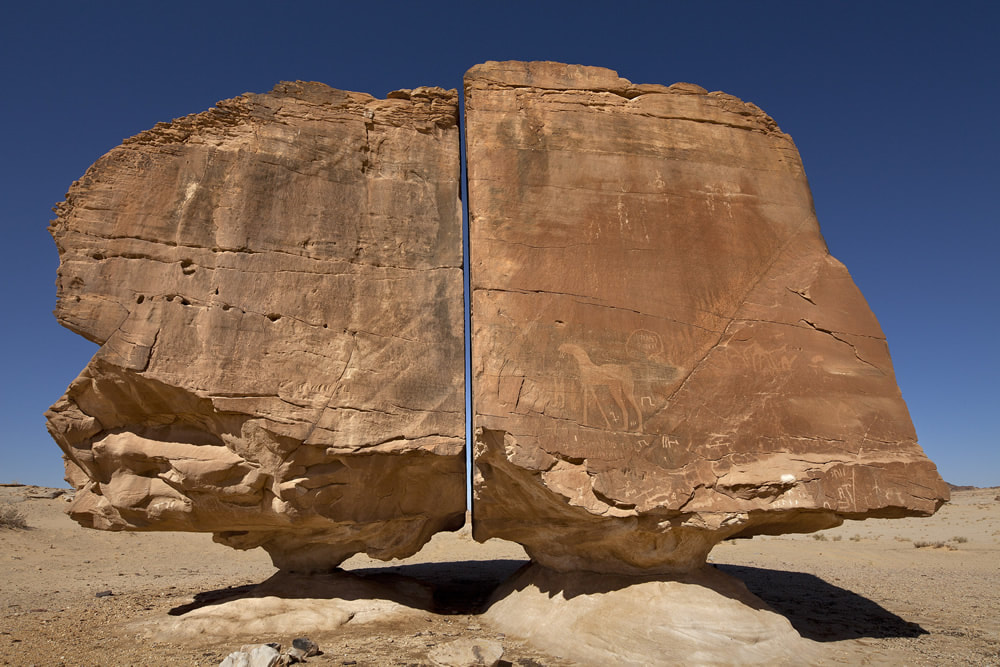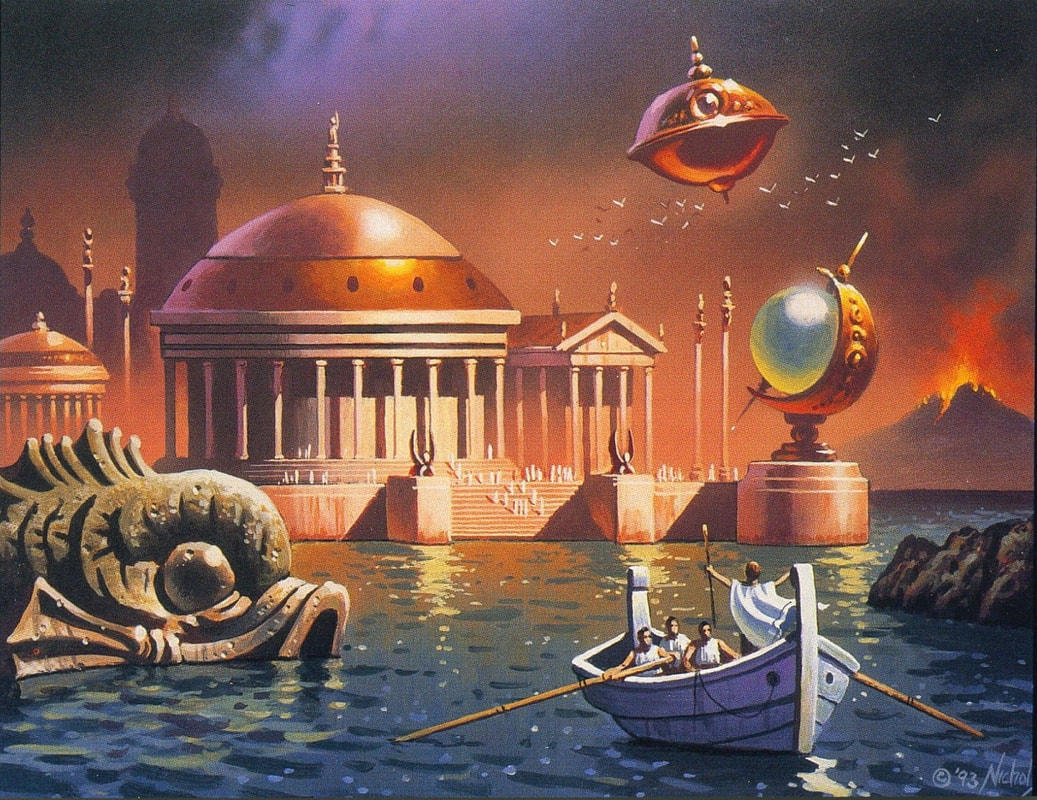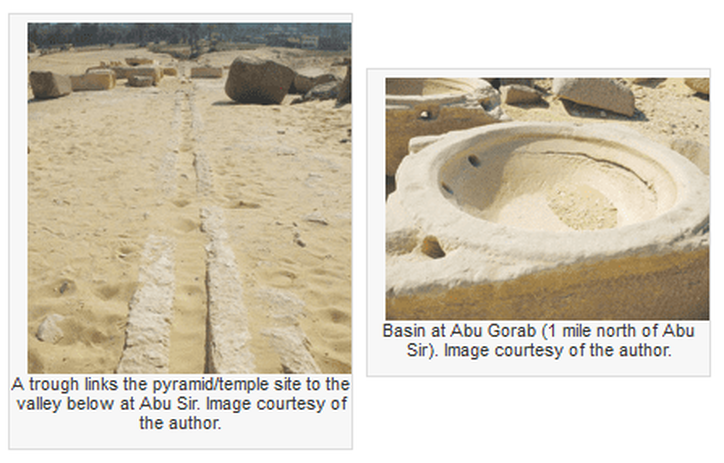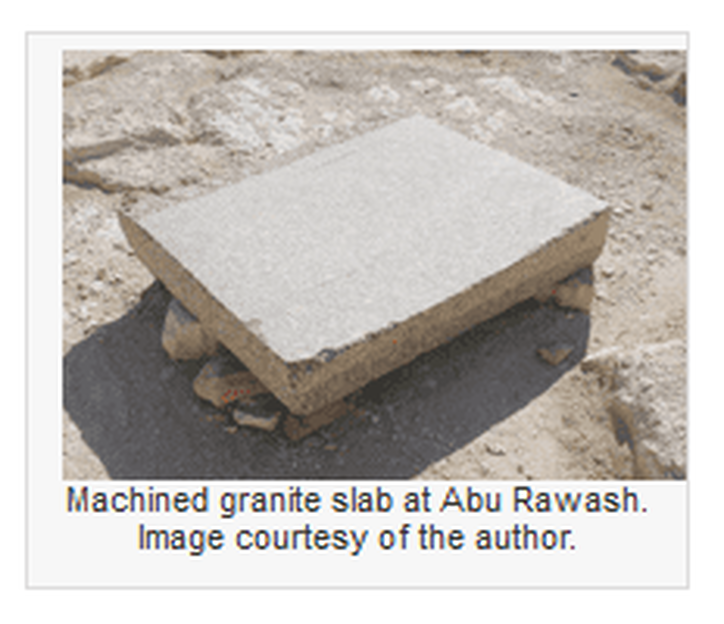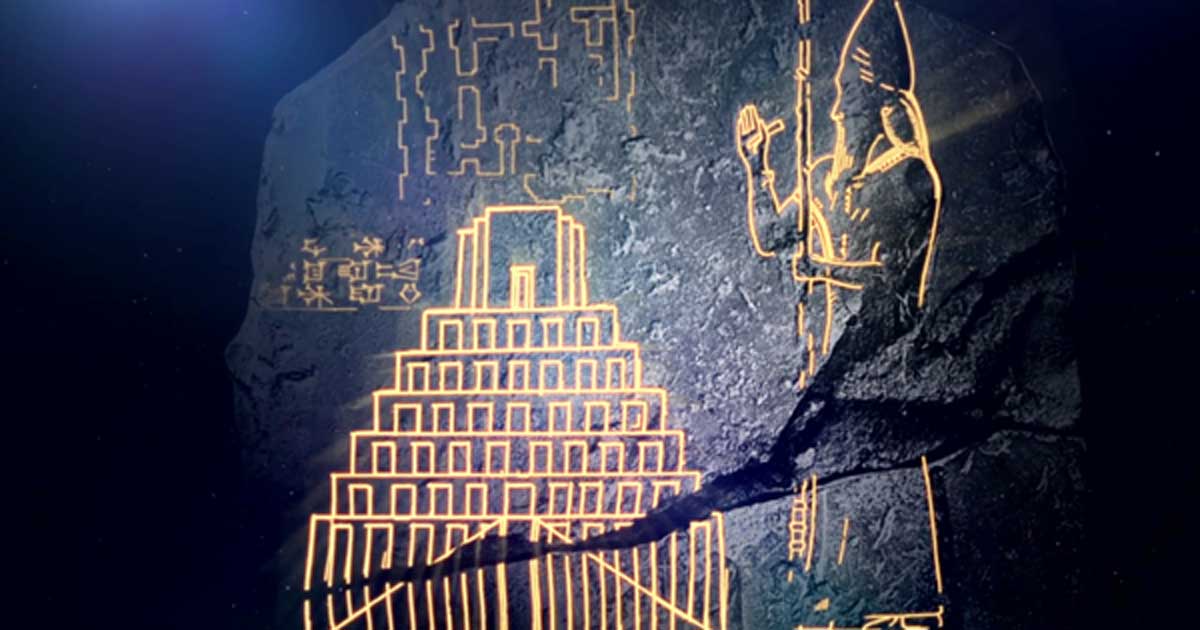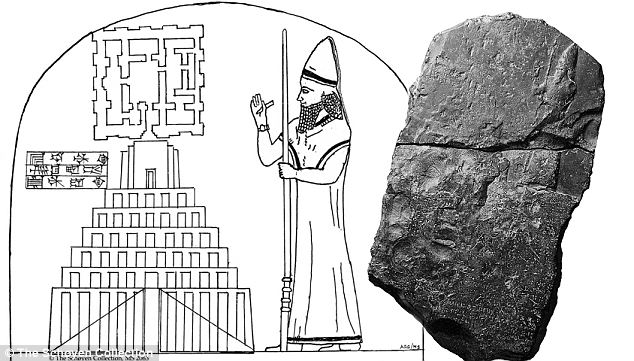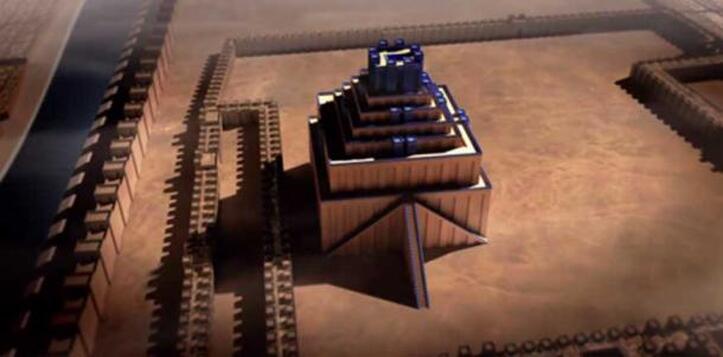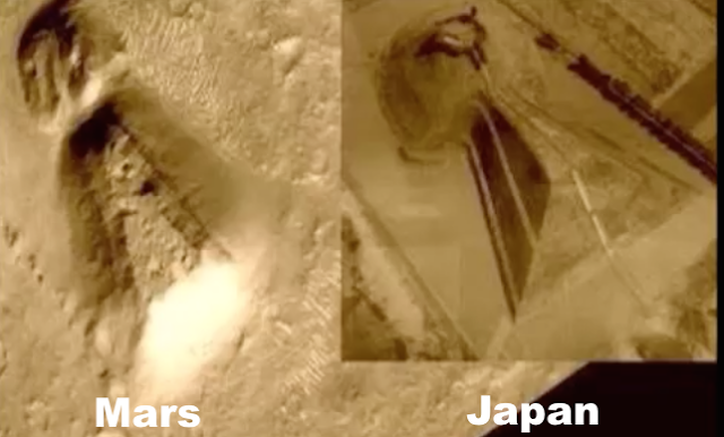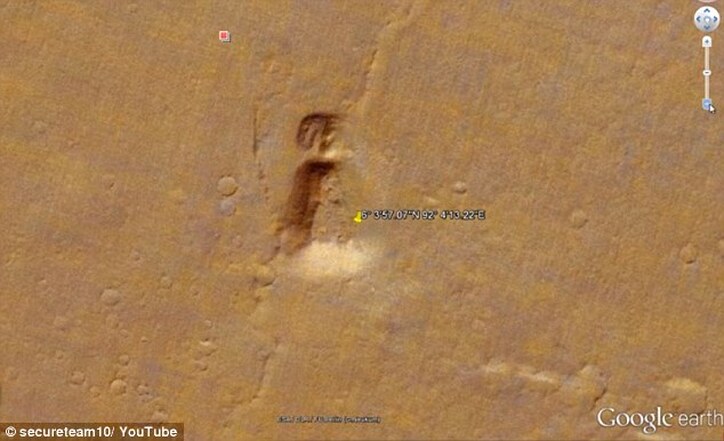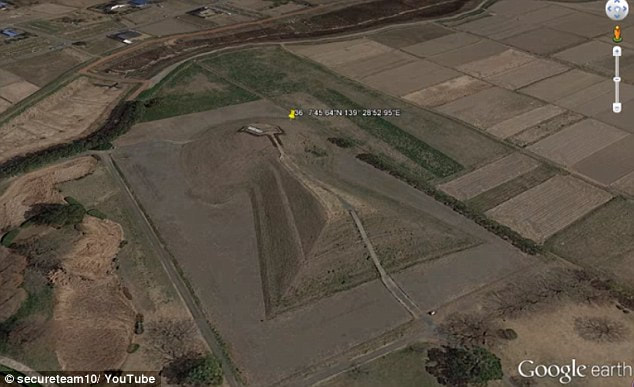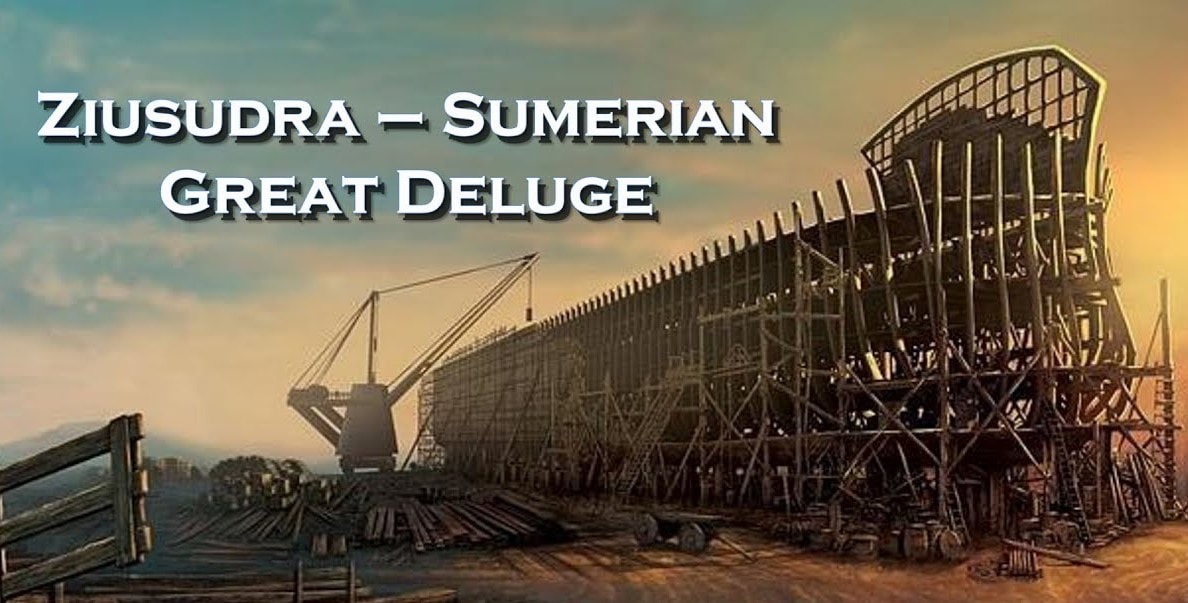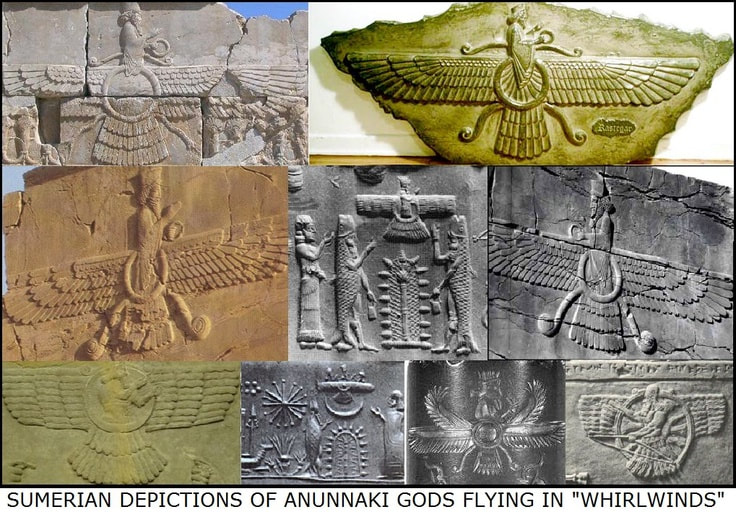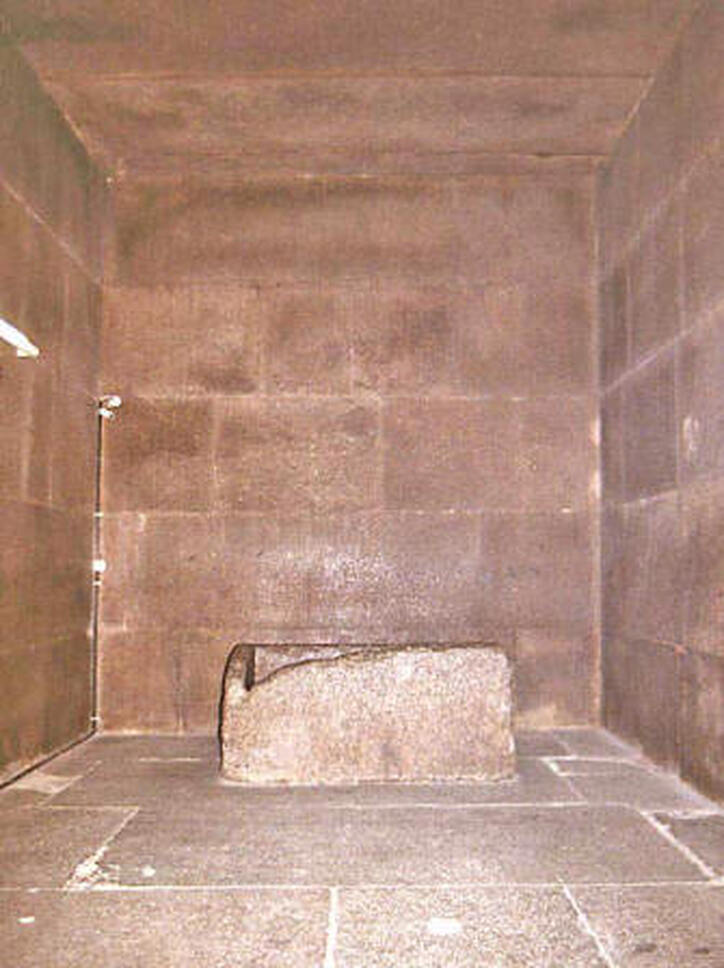|
Excavations in Costa Rica have revealed a massive — nearly perfect — stone sphere, prompting experts to ask how such precision was achieved thousands of years ago. “We have studied the terrain in which there are more than 15 of these spheres, and some are placed beside areas that give access to residential buildings as if they were placed there to welcome you. They were used as a sign of hierarchy, rank and ethnic distinction,” explains archaeologist Francisco Corrales of the National Museum of Costa Rica. The massive stone spheres are referred to as the stone spheres of Diquis, a region to the south of Costa Rica, and were made between the year 300 and 1500 AD by the predecessors of the Boruca Culture, explains a post on the Facebook post on the National Museum of Costa Rica. These massive spheres were located within important settlements, forming sets or alignments and as part of principal architectural structures, to reinforce the prestige of a place and the position of power of the leaders. The great quantity of these sculptures, the fine finish of their surface, their nearly perfect sphericity, the variety of sizes, as well as the manufacturing process, symbolism, and use in public spaces making them exceptional archaeological artifacts, explains the Diquis website. “It’s an incredible opportunity to study these unique elements in the world and in particular the five partially buried spheres located in the archaeological zone Finca 6,” says Mexican archaeologist and researcher Isabel Medina. “We work to release the spheres employing an archaeological excavation in order to document their state, both on the exposed upper surface and on the ground, with the aim of forming a record of the physical state of each one.” According to Medina, the decision to maintain the half-buried spheres “has been adequate for its in situ conservation and its subsequent study,” which is already being carried out by a multidisciplinary team from the National Museum of Costa Rica. The spheres have incredible perfection since “some of them reach 96 percent”, says Corrales, who also studies the instruments with which the spheres were made: “We found the tools that were used near the spheres and the instruments which were used to smoothen the stone. They were made of various materials, granite and gabbro rocks, limestone or sandstone, but mostly gabbro.” The production of spheres involved grinding large blocks of igneous stone, such as gabbro, granodiorite, and andesite or sedimentary stones such as limestone and sandstone. The process involved chopping the surface with stone tools, the ancients used heat as it allowed the removal of extra layers of rock and with the help of wooden tools, it was possible to control their roundness. The surface was treated with abrasives as sand to match and the larger spheres were also polished to give them luster or gloss. There are spheres of a few centimeters up to 2.66 meters in diameter and they can weigh as much as 25 tons. The raw material for their creation is located in the foothills of the Cordillera Costeña. From there, the material or the semi-finished sculpture was moved to the site where the sphere would be located and was finished there. It is unknown how the ancients transported the stones, but it was a complex work, which involved a great organization, mobilization of people, the use of levers and bearing bases. Regrettalby, most of the spheres were removed from their original site, which means valuable information about their origin and use is currently missing. The observation of the isolated object, without the social context of which it was part, has generated a series of myths and speculations without scientific basis. By underestimating pre-Columbian cultures, some consider how aliens created them, while others see in their incdredible shpae traces of the mythical Atlantis, navigational devices, doors between temporal dimensions and containers of esoteric energy. Take your pick. Anthropologists Ivar Zapp and George Erikson assert that the spheres are proof that in the delta of the Diquis, a once great civilization settled down near the sea. In their work, the Atlantis in America they argue that the petroespheres indicated marine routes, and were used as navigational instruments, and that their alignments pointed towards megalithic sites like the Columns of Hercules (Gibraltar), the pyramids of Egypt, Stonehenge, or Easter Island, suggesting that Atlanteans were related to other civilizations, and evidence of their exsitnece is present in Costa Rica.
14 Comments
A 1.7 million-year-old ‘bridge’ is the ultimate evidence that humans have been on Earth much longer than thought claims expert. “The ratio of 10:1 (length:width) fits the actual measurements of the bridge observed today.” The former director of the Geological Survey of India believes he has found the ultimate evidence of a 1.7 million-year-old man-made bridge which indicates mankind existed on Earth millions of years ago and had the ability to erect ‘sophisticated’ structures long before mainstream experts suggest. This, however, goes against everything we’ve been told since according to mainstream scientists, humans have been on Earth roughly 200,000 years, but the alleged bridge throws everything that scientists believed true into questions. The structure — which is visible from space — occupies a relatively large area stretching from India to Sri Lanka. Curiously, ancient Hindu legends suggest that King Rama, a Hindu deity built a bridge of similar proportions more than a million years ago. According to the Hindu tradition, this “strip of land” is a bridge built by Hindu god Rama, as told in the Hindu epic Ramayana. Rama is one of the most famous manifestations of the Supreme God and is recognized as the image, the spirit, and consciousness of Hinduism, one of the oldest religions in the world. In fact, since ancient times it is known as the “Bridge of Rama” or “Rama Setu”. The Indian epic Ramayana tells the story of the land bridge and how it was built to serve Hindu god Rama, in order to help him cross the water to reach the large island and rescue his beloved one from the clutches of the demon king Ravanna. It is a story of love, brave deeds and incredible constructions as it seems. Some refer to the alleged bridge as the Rama Setu, while others call it Adams Bridge and many believe it is one of the best pieces of evidence that humans have existed on Earth much longer than we’re told. Ok, that’s cool but… who’s the supposed scientist who said it’s real? We are talking about Dr. S. Badrinarayanan, former director of the Geological Survey of India and former coordinator of the survey division of the National Institute of Ocean Technology (NIOT). He studied core samples of the bridge and is apparently convinced that we’re not looking at a natural formation — as other scientists suggest — but at a man-made structure, and one that was ‘erected’ more than a million years ago. According to reports, Dr. Badrinarayanan performed a survey of this structure and concluded that it was man-made. Dr. Badrinarayanan and his team drilled 10 bore holes along the alignment of Adam’s Bridge. What he discovered was startling. About 6 meters below the surface he found a consistent layer of calcareous sand stone, corals and boulder like materials. His team was surprised when they discovered a layer of loose sand, some 4-5 meters further down and then hard rock formations below that. A team of divers went down to physically examine the bridge. The boulders that they observed were not composed of a typical marine formation. They were identified as having come from either side of the causeway. Dr. Badrinarayanan also indicates that there is evidence of ancient quarrying in these areas. His team concluded that materials from either shore were placed upon the sandy bottom of the water to form the causeway. In a special discussion board on Rediff, Dr. Badrinarayanan said: “It is not a natural formation; the top portion of it appears to be a man-made structure.” “To understand what I am saying from the geological point of view, you have to get to know several things.” “What is known as Adam’s Bridge is originally a natural grade divide separating the Bay of Bengal and the Indian Ocean to the south. So, the geological aspects are different on either side.” Dr. Badrinarayanan added: “We found marine sands on top and below that was a mixed assemblage of corals, calcareous sand stones, and boulder-like materials. “Surprisingly below that up to 4–5 meters [13–16 feet], again we found loose sand and after that, hard formations were there.” He added that “below the corals and boulders, we are getting loose sand, which means it is not natural.” However, the “Ramayana,” the bridge is said to have been built upon a wooden foundation (which was placed atop a preexisting natural elevation) that was then covered with large and small stones. But obviously, there are many who disagree with Dr. Badrinarayanan. One of them is Suvrat Kher, a geologist who specializes in marine formations, who firmly believes we are looking at nothing more than a natural formation. Writing about the alleged bridge, Dr. Kher said: “During the Pleistocene ‘ice-age’ period, glacial buildup and melting forced fluctuations in sea-level by tens of meters, setting up the conditions for several episodes of coral reef and sand shoal formation. “During periods of large sea-level drops in the Pleistocene, there would have been a land connection between India and Sri Lanka. ” “But at the end of the last Wisconsin glaciation, the sea-level began to rise world-wide.” Whenever we write about the Inner Earth, aka Hollow Earth, and the numerous ancient cultures that mention a place within our planet where there is life, we encounter hostility. But why? Is it because the existence of such a place contradicts everything we have been told in the past? Or is it because we are blindly following mainstream dogmas that have been put into place in the past telling us it’s impossible’? The idea that our planet is Hollow can be traced back thousands of years. And like other popular accounts, nearly all ancient cultures speak of certain places on Earth where we can access the inner world. One such culture are the Ancient Hopi. Not only did the ancient Hopi believe their Gods inhabited the inner parts of the Earth, they depicted mysterious Ant-like beings and flying shields thousands of years ago. Interestingly, their legends also speak of a great flood which is a clear parallel to ancient Sumerian legends of the Great Flood. If we take a look at the ancient Hopi and their beliefs we will find that this ancient culture claims that their ancestors did not arrive from the north, not by ship, but from below the surface of the Earth. In fact, the ancient Hopi indicate that the specific location of the Hopi legend is inside the Grand Canyon, where there are mysterious entrances to the inner earth. The stories of native Indians claim that the Grand Canyon was formed by the result of a great flood, which drowned the former third world, sent upon those who had forgotten the way of divinity. The Hopi cosmology specifies that this is the place where the Hopi emerged from their underground shelter after the flood had destroyed the Third World. In fact, there are numerous theories that suggest there are numerous entry points located in the Canyon, and one of the is honored in ceremony as the dwelling of an ancient parent race. This magical site is sacred and off limits to anyone but the Hopi people. Further stories indicate that in the distant past, the ancient Hopi were assisted by mysterious beings, commonly referred as insects, ants, that inhabited regions of the inner world. The ancient Hopi speak of their deities as ‘ant people.’ In fact, some of the petroglyphs found near Mishongnovi, Arizona, created by the ancient Hopi depict the enigmatic beings with antennas’ offering an idea of how these strange ant-men looked like. Interestingly, not everything is based on legends and stories. It is said that in the past, the Smithsonian institute – which has been called out for hiding ‘controversial discoveries’ — discovered a number of artifacts inside a huge cave with intricate passages and rooms, with tablets bearing strange hieroglyphs. An article published by the Arizona Gazette on April 5, 1909, says that the Grand Canyon was once home to a lost civilization, which consisted of beings of gigantic proportions. The article published over 100 years ago indicates that a massive underground citadel was also discovered by an explorer called G.E. Kinkaid who stumbled across it while rafting on the Colorado River. It is said that the entrance to the massive citadel is located ‘at the end of a tunnel that stretches for almost a mile below the surface’. However, just as the Ancient Hopi, the Macuxi Indians – indigenous people who live in the Amazon, in countries such as Brazil, Guyana and Venezuela — also speak about the Hollow Earth and how it is real. According to Macuxi legends, they are the descendants of the Sun’s children, the creator of Fire and disease and the protectors of the “inner Earth.” Until the year 1907, the Macuxies would enter some sort of cavern, and travel from 13 to 15 days until they reached the interior. It is there, “at the other side of the world, in the inner Earth” is where the Giants live, creatures that have around 3-4 meters in height. As you can see, there seem to be conclusive indicators that a place called the inner earth may actually exist. Has this been covered up as some people suggest? And could this be part of our amnesic species as Robert Sepehr suggest? The Biblical tale of Adam and Eve in the Garden of Eden is based on actual events which happened nearly 200,000 years ago. A comparison of ancient texts with the latest breakthroughs in genetic science reveals amazingly consistent details, which enable us to finally solve the mystery of mankind’s origins. The shocking conclusion is that man was a genetic hybrid, created and manipulated not by God, but by flesh-and-blood, walking, talking ‘gods’. Man, the Slave [Sumerian depiction of Anunnaki ‘gods’ manipulating mankind’s DNA (via the Tree of Life), while being overseen by ANU (literally translating as ‘the Sky Father’)]A religious belief in One God has dominated the thinking of western society for more than a thousand years, leading to considerable difficulties with the concept of flesh-and-blood ‘gods’. However, such an idea did not present any problems to the world’s first known civilisation – the Sumerians – who lived alongside these divine rulers and depicted them as human-like beings. The Sumerian scribes and their Akkadian successors inscribed clay tablets with a wealth of information about the gods. One such text, commonly known by the name of its hero, Atra-Hasis, describes the background to the creation of man, when the gods themselves were involved in the painstaking extraction of minerals from Earth: “When the gods, as men, bore the work and suffered the toil – the toil of the gods was great, the work was heavy, the distress was much.” Conditions were so severe that, after 40 periods of hardship, the gods rebelled against their leader Enlil. A council of the gods was then called, at which the god Ea (alias Enki) provided the solution: “While the Birth Goddess is present, let her create a Primitive Worker, let him bear the yoke, let him carry the toil of the gods!” The ensuing passages of the Atra-Hasis describe what appears to a modern-day reader as a cloning process, in which the goddess Nin-ti (‘Lady Life’) made fourteen pieces of ‘clay’ and impregnated fourteen ‘birth goddesses’. The first slaves comprised seven males and seven females, referred to as LU.LU – a term indicating a genetic mixture between the primitive hominid Homo erectus and the gods themselves. The event can be dated to around 200,000 years ago when the large-brained Homo sapiens suddenly appeared on this planet. The Meaning of Eden The Biblical Garden of Eden is not a mythological place but a real location. In order to understand what happened there, it is necessary to appreciate that the word Eden is derived from the Sumerian term E.DIN. Whilst the first syllable ‘E’ meant ‘Home’, the second syllable was an abbreviation of DIN.GIR, commonly translated as ‘the gods’. Eden or E.DIN was therefore the ‘Abode of the Gods’. Ancient texts describe more than one abode of the gods, with the Earth being divided geographically between two rival groups, headed by the brothers Enlil and Enki respectively. Whilst the Enkiites inhabited the African continent, the Enlilites occupied Asia and particularly the fertile lands of Mesopotamia. We are thus dealing with both a western Eden and an eastern Eden. It was in the western Eden, also known as the Abzu or Lower World, that Enki and Ninti created the LU.LU slave, a detail which is confirmed by finds of the oldest Homo sapiens fossils in Africa. It was in these mineral-rich lands that man was put to work in the dangerous process of extracting minerals from deep underground. A text known as The Myth of the Pickaxe explains what happened next. In the eastern Eden, Enki’s brother and rival, Enlil, was besieged by his underlings, who complained that the slaves were being unfairly monopolised in the Lower World. Enlil, described in the following text as ‘the Lord’, reacted accordingly: “The Lord called forth the AL.ANI, gave its orders. He set the earth splitter as a crown upon its head, and drove it into the Place-Where-Flesh-Sprouted-Forth. In the hole was a head of a man; from the ground, people were breaking through towards Enlil. He eyed the Black-headed Ones in steadfast fashion.” This raid on the Black-headed slaves is also mentioned briefly in the Old Testament, Genesis 2:7-8, where man rather curiously had already been formed when he was ‘put’ in the Garden of Eden by ‘God’. The Serpent God The Book of Genesis tale of Adam and Eve is nowadays regarded as a symbolic myth, but several clues suggest that it drew upon an earlier account of a real event. The first clue is that God himself is described as one of the walking talking gods. The second clue is the presence of the Serpent – a well-known symbol for the ancient Egyptian gods, and particularly Enki himself, the genetic scientist who had created man. It is no coincidence that the modern symbol of medicine is a serpent entwined around a staff [i.e. the caduceus]. [Sumerian depiction of the caduceus, from where it actually originated. Notice the two winged reptilians flanking the caduceus. Probable interpretation of the symbol: The joint effort of The Serpent God Enki and Serpent Goddess Ninmah to genetically engineer mankind.]The third clue lies in the outcome of the Serpent’s intervention. Adam and Eve’s embarrassment at being naked, along with Biblical references to the acquisition of ‘knowledge’, clearly suggest that they were the first human pair to become sexually aware. The Old Testament suggests that this change was caused by the consumption of a ‘fruit’. This is a significant detail because, according to the scenario outlined so far, man was created by the gods as a hybrid creature, and hybrids are nearly always born sterile. The tale of sexual knowledge being granted in the Garden of Eden therefore carries a distinct ring of truth. How exactly did a ‘fruit’ bestow sexual knowledge on Adam and Eve? As mentioned earlier, the Serpent god was Enki, the genetic scientist of the gods, and the ‘fruit’ with which he tempted Eve would thus seem to symbolise a deliberate genetic intervention by him. [Sumerian depiction of Enki (left), the Serpent God (notice his half human-half serpent body)]However, in order to confirm our suspicions, we must first address the questions of motive and opportunity, and we must produce a solid scientific hypothesis on how such a genetic change could have been introduced. The background provided so far provides all but one of the clues we need to reconstruct the event. The missing piece which solves the puzzle is the mysterious ‘Tree of Life’ in the Garden of Eden. The Tree of Life According to the Book of Genesis, Adam and Eve were free to eat from a ‘Tree of Life’ up until the moment they became sexually aware. Only then did the Lord God say: “The man has now become like one of us, knowing good and evil. He must not be allowed to reach out his hand and take also from the tree of life and eat, and live forever.” Why the sudden change of mind? Why was it that this god, identified earlier as Enlil, originally wanted man to eat the fruit and live forever, but then decided to withdraw it from Adam and Eve? Why did it suddenly become necessary for him to expel them and safeguard the Tree of Life with a ‘flaming sword’? The answer is amazingly simple. Originally, mankind was designed as a slave workforce which could be easily controlled, and his sterility was an essential control mechanism. However, with the granting of sexual knowledge to Adam and Eve, man acquired the means to independent reproduction. The longevity offered by the Tree of Life thus changed from an asset to a liability, creating a serious risk of an out-of-control population explosion. Is it really possible that consumption of a ‘fruit’ could have delayed Adam and Eve’s ageing process? Genetic scientists have recently discovered that ageing is caused by genetic mutations, and that one of the prime causes of these errors is excess oxygen in the cells. This oxygen, known as ‘free radicals’ causes damage to our cells in the same way that it causes cars to rust and butter to go rancid. [Sumerian depiction of Adam, Eve, the Serpent (Enki) and the Tree of Life]Scientists are now investigating the possibility of using a cocktail of drugs to form a protective barrier around the cells, and so extend the human life span. Such a drug could well lie behind the symbolism of the legendary fruit of the Tree of Life. Anti-ageing drugs, however, were only one method used by the ancient gods to maximise their life spans. As explained in my book, Gods of the New Millennium, the primary factor behind the alleged immortality of the gods was almost certainly a genetic inheritance, as evidenced by the male gods’ obsession with marrying their half-sisters. Such a genetic longevity is indeed being sought in the laboratory today. Scientists at the Geron Corporation in America are confident that they can prolong the life of human cells by manipulating the telomeres on the end of the chromosomes. Furthermore, a genome which was artificially enhanced in this way would make perfect sense for a species which was attempting to overcome the time barriers to inter-stellar travel. Adam and Eve According to the Old Testament, Adam lived for 930 years, but this amazing life span pales into insignificance compared to the reigns of thousands of years recorded in the Sumerian Kings Lists. These periods once seemed incredible, but are now scientifically plausible, based on the assumption that man was indeed created in the gods’ image, genetically-speaking. Today’s average life span of three score years and ten is the inevitable result of the reproductive orgy and genetic mutations which followed the events in Eden. Let us now return to the crucial question of how and why the god Enki genetically reprogrammed the human race. Enki’s motive presents us with no problem, other than denting our proud human heritage, for it would seem that his gift of sexual knowledge was simply a spiteful trick on his brother Enlil. Following the raid on the slave camps, mentioned earlier, we can safely surmise that Enki was more than a little upset with his brother, and was awaiting a suitable opportunity for revenge. How was it that Enki, the Serpent god, turned up in the Garden of Eden? The plausible answer is that Enlil’s raid into Africa captured an insufficient number of male workers. Without the cloning technology and the females that were created to act as surrogate mothers, Enlil was powerless to expand his newly acquired labour force. It was thus inevitable that he would have to seek Enki’s help in setting up a fully independent medical centre. What happened next? The most likely scenario is that Enki brought two female LU.LUs to the eastern Eden and offered to demonstrate the necessary procedures by carrying out the first cloning operations. Let us assume that one male and one female embryo were implanted into the two females with Enlil blissfully unaware that these embryos had been genetically altered by Enki. The birth of Adam and Eve would thus have appeared perfectly normal, and they would have happily spent their childhood days playing in ‘the Garden’ (or more likely a secure wing of the hospital facility). Then one day, the sex genes kicked in (as they do) and the two pubescent children suddenly realised that they were naked. When Enlil saw them hiding with embarrassment, he immediately realised the genetic trick which had been played on him, and the rest is history – the serpent was cursed and the blameless Adam and Eve were expelled. Conclusions Modern genetic science has revolutionised our understanding of the Book of Genesis and other ancient texts. The alleged intervention by so-called gods is now supported by a scientifically plausible scenario, which involves two different Edens and two separate genetic creations. It is hardly surprising that the editors of the Bible were extremely confused, and their confusion has handed the Darwinists a walkover victory in the debate on mankind’s origins. But, whilst these mainstream scientists hunt in vain for mankind’s ‘missing links’, interventionist scientists are engaged in a different search which has shattering implications for the new millennium – a search for mankind’s ‘missing gods’. Located at the Tamya Oasis in Saudi Arabia is a fascinating megalith called Al-Naslaa. It is perfectly split in half and has curious symbols portrayed on its surface. If that wasn’t enough, the two rocks split in half with laserlike precision have managed to remain standing for centuries, and are somehow perfectly balanced. The stones were split in half with an LASER-LIKE precision Imagine walking around in the desert, exploring the unknown and you come across a massive standing stone, split in half by a PERFECT LINE. What would be the first thing that jumps to your mind? The standing stone(s) of Al-Naslaa truly are a GIANT mystery. Located in Saudi Arabia, the two stones split in half have created confusion among experts ever since their discovery. Considered as one of the most photogenic petroglyphs on the surface of the planet, the massive rock is split in half with extreme precision. However, according to experts, the laser-like precision cut was NOT created artificially. According to many, it is one of the greatest mysteries found by man, and this incredible ancient stone structure attracts thousands of tourists each year who come to Al-Naslaa to observe its perfection and balance, which has given rise to countless theories that try to explain its origin. The rock is in perfect balance, supported by two bases and the strangest thing is that it is perfectly split in half. It all suggests that at some point it must have been worked on by extremely precise tools, some have even ventured out and said laser-like tools. Just look at the precision! Each part of the split stone has a smaller rock or shock absorber at the bottom, preventing it from touching the ground. Archaeological discoveries show that in ancient times the region where the rock is located was inhabited. In fact, it is one of the most photogenic petroglyphs in the area. The megalith was discovered by Charles Huver in 1883, and ever since its discovery, it has been a subject of debate among experts who have divided opinions when it comes to its origin. In 2010, SCTH – Saudi Commission for Tourism & National Heritage announced the discovery of a rock near Tayma with a hieroglyphic inscription of Pharaoh Ramses III. Based on this discovery, researchers have hypothesized that Tayma was part of an important land route between the Red Sea coast of the Arabian Peninsula and the Nile Valley. Recent archaeological discoveries show that Tayma has been inhabited since the Bronze Age. As noted by http://saudi-archaeology.com the split between two standing rock and its flat surface is a completely natural occurrence. UnusualPlaces offers a natural explanation for the enigmatic, laser-like cut: “…Most likely the ground shifted slightly underneath one of the two supports and the rock split. Could be from a volcanic dike of some weaker mineral that solidified there before everything was exhumed. “Or, it could be an old pressure crack (you see a parallel crack just to the right of it) that has been pushed/pulled apart some. Or, it could be an old (minor) fault line, since fault motion often creates a zone of weakened rock that erodes relatively easier than the surrounding rock…” But that of course is just another theory. The extremely precise cut, dividing the two stones has raised more questions than answers. If we are to understand its origin, perhaps we should travel back in time. According to reports, the oldest mention of the oasis city appears as “Tiamat” in Assyrian inscriptions dating as far back as the 8th century BCE. The oasis developed into a prosperous city, rich in water wells and handsome buildings. Furthermore, archaeologists have discovered Cuneiform inscriptions possibly dating from the 6th century BCE at the oasis city. It is mentioned several times in the Old Testament. The biblical eponym is apparently Tema, one of the sons of Ishmael. Interestingly, for part of his reign, Babylonian king Nabonidus retired to Tayma for worship and looking for prophecies, entrusting the kingship of Babylon to his son, Belshazzar. As you can see, besides being an area where numerous archaeological discoveries have been made, the area where the incredible megalith of Al-Naslaa is located is also rich in history. Taking a look at the stone of Al-Naslaa you cannot help and wonder what its true purpose was. Is the split in the rock really a result of the forces of nature as some experts suggest? Or is it possible that just as there are many other ancient places on Earth — dating back thousands of years — featuring precision cuts, this stone too was crafted by an unknown technology? Atlantis: everyone knows the name and almost everyone knows that the name refers to a mythical, sunken island continent in the Atlantic Ocean, according to a story told by the Greek philosopher Plato sometime during the 4th century BCE. Whether or not Atlantis existed has been a matter of conjecture for nearly four hundred years, ever since Francis Bacon published his novel The New Atlantis in 1626. Atlantis is a controversy that continues to this day. For some folks, Atlantis existed just as Plato explained, but for others the idea alone runs across the grain of prevailing scholarship and archaeological investigation. For those who are sure Atlantis did exist, it is a belief. But for the skeptic, a prehistoric civilisation with technical sophistication is pure fiction. Unfortunately, for those who believe there is no proof, Atlantis has been ‘discovered’ by researchers in almost every part of the world, from South America to the Eastern Mediterranean to the British Isles. Although scholarly consensus is convinced that Plato’s fictitious tale of Atlantis was based on the Island of Thera’s destruction in 1628 BCE, Atlantis remains as the Holy Grail of archaeology, even if archaeologists won’t admit it. Discovering evidence – even the smallest artefact – that the lost continent of Atlantis really existed would be the greatest find in the annals of all historical disciplines. History would not only be made, but have to be rewritten. However, until that evidence is discovered and confirmed, the controversy will rage on between believers and skeptics, with the skeptics having a distinct advantage. It’s all about evidence. Solid evidence is important and there is no direct evidence that Atlantis existed. No ancient stone or sign has ever been found stating ‘Atlantis this Way’ or ‘Welcome to Atlantis.’ No artefact has been discovered proving that sophisticated Atlantean equipment was used by any culture or civilisation during prehistoric times. This being the case, why do some people insist that the story of Atlantis is fact? The answer to this question lies in the Valley of the Nile, ancient Egypt, and the enigmatic Old Kingdom period. It’s where my hunt for Atlantis began. STANDARD EXPLANATION MISINTERPRETS THE EVIDENCE The ruins of ancient Egypt are unique. Nowhere else in the world are there such magnificent megalithic structures as well as fields of granite. It’s obvious that the builders of ancient Egypt’s temples and pyramids used granite, as well as limestone and basalt, as primary materials in their architectural designs. The importance of this fact cannot be overlooked. Working with stone is not easy and working with granite – the hardest rock known to man – and achieving any scale of economy in order to build big and build everywhere, like the ancient Egyptians did, is impossible without diamond studded tools. Today, such large and numerous projects on a big scale require specialised tools and equipment. Case in point: Giza’s Great Pyramid was the tallest structure in the world until France erected the Eiffel Tower in 1889. So, how could the ancient Egyptians build an entire civilisation out of limestone, basalt and granite using little more than copper chisels, stone hammers, dolerite pounding rocks, and brute strength? How could a large number of granite statues, some in excess of forty feet tall, be carved with such detail and perfection and then erected? The traditional explanation is that they did it with copper chisels, stone hammers, dolerite pounding rocks, and brute strength. However, for me, since no culture or civilisation was able to duplicate in complexity, scale, and quantity, the Old Kingdom construction efforts during the next 4,000 years, then the traditional understanding must be an incorrect interpretation of the evidence – the most erroneous being the Great Pyramid. Skepticism is a two-way street. The idea that the Great Pyramid was a tomb defies logical and cogent reasoning. First, funeral items were never found within any of the pyramid’s chambers. Nor are there any inscriptions describing it as a tomb. Second, its internal design is strange and does not accommodate human beings. Passageways that lead to its three chambers are a little more than three feet in height and width. Nor are there any steps; so, to move about you have to crawl on your hands and knees. This makes moving about inside the pyramid next to impossible for anyone, let alone a ritual funerary party. Third, the walls and ceiling of the uppermost chamber, the alleged burial chamber, was built from seventy-ton slabs of granite with another five layers of granite in the area directly above its ceiling. Finally, as any good detective would consider important, a colossal structure such as the Great Pyramid requires enormous resources to build which, consequently, requires a valid and reasoned motive. A tomb is not one of them. At a cost of thirty-five billion in adjusted (US) dollars, according to engineer Markus Schulte, there had to be a very good reason to build the Great Pyramid; a reason or a cause that united a nation in mind and in spirit. To be sure, the currently accepted idea that the Great Pyramid’s construction was a national project is an accurate interpretation of what likely happened. However, any large scale operation that consumes billions of dollars in resources must return some type of social benefit. In the case of the Great Pyramid, the benefit somehow involved water. On the Giza Plateau just south of the middle pyramid, a granite trough emerges from the sand (see illustration). At Abu Sir, south of Sakkara, a limestone trough runs the course of the hill on which a pyramid was built, and at both Abu Sir and its neighbour pyramid, Abu Gorab, there are numerous stone basins. Although denied by most Egyptologists, there is also evidence that a system of tunnels exists under the Giza Plateau. The so-called ‘Tomb of Osiris’ runs deep into the ground as does ‘the pit’ in the Great Pyramid’s subterranean chamber. Near the granite trough there is also two square tunnels drilled into the bedrock, although now filled with sand. Furthermore, the Great Pyramid’s original design included a perimeter wall, which might have functioned as a retaining wall for a reservoir for fresh water that flowed through a canal from the ancient Lake Moeris. A DEVICE, NOT A TOMB In his 1967 book The Pharaoh’s Pump, Edward Kunkel put forth the idea that the Great Pyramid was a hydraulic device. According to Kunkel, the Great Pyramid served as a ‘ram’ style water pump in order to facilitate moving large quantities of stone. Through a series of locks, stone blocks arriving from Upper Egypt were moved onto the Giza Plateau by barge, through a system of canals that linked the Nile River to the Great Pyramid. In Kunkel’s theory, the Great Pyramid housed two pumps. One was built underground and a second pump was built above ground. The underground pump consisted of the subterranean chamber and its associated passageways, and the above ground pump, the middle and upper chambers. The underground ‘ram’ style water pump used energy created by compressing water to maintain water flow, as did the middle chamber for the upper pump. In the lower pump, the subterranean chamber functioned as a compression chamber, and in the upper pump, the middle chamber functioned as a compression chamber. The odd niche in the middle chamber, according to Kunkel, was a safety value, and the upper (King’s) chamber, a secondary compression chamber. Kunkel’s theory is not as wild as it first seems. In his book he discusses the archaeological evidence that supports his idea. However, the notion that the middle and upper chambers functioned as compression chambers is a stretch of engineering imagination. For the upper pump to function, water would have to enter the Grand Gallery from the lower pump and then flow into the middle and upper chambers. Once in the upper chamber, the continuous flow of water from below would create two streams exiting the pyramid through the shafts built into the north and south sides. Unfortunately, Kunkel’s upper pump theory requires the creation of a vacuum, a number of valves, and some type of combustible fuel and combustion chamber to drive the pump, which according to Kunkel was located above the uppermost chamber. None of which appear plausible, although the theory that the subterranean chamber functioned as a ‘ram’ style water pump makes sense. According to marine engineer John Cadman, Kunkel made the mistake of theorising that the entire pyramid was a water pump. Cadman realised that only the subterranean chamber and associated passageways would have functioned as a pump. So, Cadman set out to solve it the engineering way. With as many photos of the subterranean chamber as he could find, Cadman built a model to test his theory, the first of which didn’t work. Accordingly, he went over the model’s design looking for weak points, and built a second model. This one worked the first time. He then built two more models, one which was made with a glass top and ink injectors in order to study the flow of the water inside the chamber. After studying this model he concluded that the chamber was designed to efficiently circulate and move water through the output and waste line. Cadman experimented further by adding a vertical pipe connected to the input pipe, called a ‘stand pipe’. In a ram pump, water enters the compression chamber from an elevated source. Inside the compression chamber an opened valve allows water to flow out until the velocity forces the valve shut; when the valve closes high pressure forces water past the check valve and through the output line. When the valve reopens, water once again flows down the input pipe into the compression chamber. A vertical pipe connected to the input line facilitates the pressure wave exiting the system and thereby allows greater cycling, i.e. water is moved through the pump at a faster rate. He also discovered that the stand pipe increases the intensity of the compression wave inside the chamber. Cadman’s conclusion: whoever carved the subterranean chamber out of bedrock knew exactly what they were doing. The chamber’s design was deliberate and engineered to quickly move water through the system. Furthermore, the compression wave resulting from the pump’s action was apparently more important to the builders of the pyramid than the water being pumped. This leads to another question: why would the pyramid builders design a device that intentionally sent a compression wave up through the body of the pyramid? Although the answer to that question still lies in the future, the significance of Cadman’s modelling of the Great Pyramid’s subterranean area is obvious. The builders of the Great Pyramid understood engineering physics, at least in the area of hydraulics which requires scientific inquiry and the application of science; in other words, technology. Herein is the answer to how the pyramid builders built an entire civilisation out of limestone, basalt and granite. If they had achieved an understanding of hydraulics sufficient to build a large ram pump, certainly they also achieved an understanding of physics sufficient to develop some type of machine technology. Of course, skeptics would argue if they used machines to build, then where are the machines now? I, too, would like to know what happened to the machines, but the reality is the machines they used, or what is left of them, probably disintegrated and returned to the elements from which they were made long ago. Exposed to weathering, only rock can withstand the corrosiveness of the environment for extremely long periods of time, although the possibility exists that beneath the Saharan sands lies the machining treasure of Civilisation X. Even so, there is another way to demonstrate that powered machines were used in the process of building the Old Kingdom’s magnificent structures. Whether a hand tool or power tool, every tool leaves its mark, and marks from hand tools are very different than those made by machines. Anyone who has taken metals or wood shop in high school knows this to be true. A cut made from a table saw is flat and straight where as a cut made by a person using a hand saw is less precise, not quite as flat or straight. The telltale signs of a power tool or machine are the minute marks the blade’s teeth make as they remove material. Although difficult to see, close up the marks from the blade are visible and make a regular pattern across the surface of the cut material. These marks are called ‘feed lines’ and are left by the machine as the operator feeds the material into the cutting blade. Finding evidence of feed marks on stone at one of Egypt’s ancient sites would be the equivalent of finding the machine that made those marks. On the Giza Plateau just south of the middle pyramid, a granite trough emerges from the sand (see illustration). At Abu Sir, south of Sakkara, a limestone trough runs the course of the hill on which a pyramid was built, and at both Abu Sir and its neighbour pyramid, Abu Gorab, there are numerous stone basins. Although denied by most Egyptologists, there is also evidence that a system of tunnels exists under the Giza Plateau. The so-called ‘Tomb of Osiris’ runs deep into the ground as does ‘the pit’ in the Great Pyramid’s subterranean chamber. Near the granite trough there is also two square tunnels drilled into the bedrock, although now filled with sand. Furthermore, the Great Pyramid’s original design included a perimeter wall, which might have functioned as a retaining wall for a reservoir for fresh water that flowed through a canal from the ancient Lake Moeris. A DEVICE, NOT A TOMB In his 1967 book The Pharaoh’s Pump, Edward Kunkel put forth the idea that the Great Pyramid was a hydraulic device. According to Kunkel, the Great Pyramid served as a ‘ram’ style water pump in order to facilitate moving large quantities of stone. Through a series of locks, stone blocks arriving from Upper Egypt were moved onto the Giza Plateau by barge, through a system of canals that linked the Nile River to the Great Pyramid. In Kunkel’s theory, the Great Pyramid housed two pumps. One was built underground and a second pump was built above ground. The underground pump consisted of the subterranean chamber and its associated passageways, and the above ground pump, the middle and upper chambers. The underground ‘ram’ style water pump used energy created by compressing water to maintain water flow, as did the middle chamber for the upper pump. In the lower pump, the subterranean chamber functioned as a compression chamber, and in the upper pump, the middle chamber functioned as a compression chamber. The odd niche in the middle chamber, according to Kunkel, was a safety value, and the upper (King’s) chamber, a secondary compression chamber. Kunkel’s theory is not as wild as it first seems. In his book he discusses the archaeological evidence that supports his idea. However, the notion that the middle and upper chambers functioned as compression chambers is a stretch of engineering imagination. For the upper pump to function, water would have to enter the Grand Gallery from the lower pump and then flow into the middle and upper chambers. Once in the upper chamber, the continuous flow of water from below would create two streams exiting the pyramid through the shafts built into the north and south sides. Unfortunately, Kunkel’s upper pump theory requires the creation of a vacuum, a number of valves, and some type of combustible fuel and combustion chamber to drive the pump, which according to Kunkel was located above the uppermost chamber. None of which appear plausible, although the theory that the subterranean chamber functioned as a ‘ram’ style water pump makes sense. According to marine engineer John Cadman, Kunkel made the mistake of theorising that the entire pyramid was a water pump. Cadman realised that only the subterranean chamber and associated passageways would have functioned as a pump. So, Cadman set out to solve it the engineering way. With as many photos of the subterranean chamber as he could find, Cadman built a model to test his theory, the first of which didn’t work. Accordingly, he went over the model’s design looking for weak points, and built a second model. This one worked the first time. He then built two more models, one which was made with a glass top and ink injectors in order to study the flow of the water inside the chamber. After studying this model he concluded that the chamber was designed to efficiently circulate and move water through the output and waste line. Cadman experimented further by adding a vertical pipe connected to the input pipe, called a ‘stand pipe’. In a ram pump, water enters the compression chamber from an elevated source. Inside the compression chamber an opened valve allows water to flow out until the velocity forces the valve shut; when the valve closes high pressure forces water past the check valve and through the output line. When the valve reopens, water once again flows down the input pipe into the compression chamber. A vertical pipe connected to the input line facilitates the pressure wave exiting the system and thereby allows greater cycling, i.e. water is moved through the pump at a faster rate. He also discovered that the stand pipe increases the intensity of the compression wave inside the chamber. Cadman’s conclusion: whoever carved the subterranean chamber out of bedrock knew exactly what they were doing. The chamber’s design was deliberate and engineered to quickly move water through the system. Furthermore, the compression wave resulting from the pump’s action was apparently more important to the builders of the pyramid than the water being pumped. This leads to another question: why would the pyramid builders design a device that intentionally sent a compression wave up through the body of the pyramid? Although the answer to that question still lies in the future, the significance of Cadman’s modelling of the Great Pyramid’s subterranean area is obvious. The builders of the Great Pyramid understood engineering physics, at least in the area of hydraulics which requires scientific inquiry and the application of science; in other words, technology. Herein is the answer to how the pyramid builders built an entire civilisation out of limestone, basalt and granite. If they had achieved an understanding of hydraulics sufficient to build a large ram pump, certainly they also achieved an understanding of physics sufficient to develop some type of machine technology. Of course, skeptics would argue if they used machines to build, then where are the machines now? I, too, would like to know what happened to the machines, but the reality is the machines they used, or what is left of them, probably disintegrated and returned to the elements from which they were made long ago. Exposed to weathering, only rock can withstand the corrosiveness of the environment for extremely long periods of time, although the possibility exists that beneath the Saharan sands lies the machining treasure of Civilisation X. Even so, there is another way to demonstrate that powered machines were used in the process of building the Old Kingdom’s magnificent structures. Whether a hand tool or power tool, every tool leaves its mark, and marks from hand tools are very different than those made by machines. Anyone who has taken metals or wood shop in high school knows this to be true. A cut made from a table saw is flat and straight where as a cut made by a person using a hand saw is less precise, not quite as flat or straight. The telltale signs of a power tool or machine are the minute marks the blade’s teeth make as they remove material. Although difficult to see, close up the marks from the blade are visible and make a regular pattern across the surface of the cut material. These marks are called ‘feed lines’ and are left by the machine as the operator feeds the material into the cutting blade. Finding evidence of feed marks on stone at one of Egypt’s ancient sites would be the equivalent of finding the machine that made those marks. The most intriguing aspect of Abu Rawash, though, lies on its south side, a hundred feet or so from the base of the pyramid. There is a pink granite slab approximately four feet in length, three feet wide, and a foot in thickness. It’s propped up on a dozen or so stones the size of a softball. The granite stone is pristine, as if it was hidden away for thousands of years and only recently uncovered. The surface of the stone is smooth to the touch and at its top is an arc, precise in its edge, which separates the stone’s smooth surface from its rough. On the smooth surface there are two slice marks, one near the top and another toward the bottom. And as you look close at the stone’s surface, minute horizontal striations are clearly visible in the same pattern of the separating arc. Unmistakably, this pink granite slab was cut using a machine; irrefutable evidence that whatever construction crew was responsible for the pyramid at Abu Rawash, they were using some type of power saw. Abu Rawash isn’t the only place, either. There is evidence elsewhere that powered equipment was used by the pyramid builders – on the Giza Plateau, on the east side of the Great Pyramid at the north end of the basalt patio. Originally, the machine marks on these stones were not visible, hidden by adjoining blocks of a finished patio. But sometime over the course of the last four thousand years or more scavengers removed a number of blocks from the patio’s periphery, particularly the north end, exposing what the pyramid builders did not want anyone to see. Mistakes made by the men who operated the saws. At Giza, the evidence is just as compelling as what exists as Abu Rawash. WAS THERE A CIVILISATION X? Since the ancient Egyptians that lived from the third through the first millennium BCE were not known to have developed machine technology, and no other civilisation since has until modern times, the builders responsible for the stone at Abu Rawash and the Great Pyramid’s basalt patio must have existed at a remote time in prehistory. The evidence speaks for itself. There was Civilisation before Civilisation. I like to refer to it as Civilisation X. Who were they? Was Egypt a colony of Atlantis as some theorists have put forth? Or were they an unknown culture never described by ancient peoples? Although everyone knows that the story of Atlantis is attributed to the Greek philosopher Plato, most people don’t realise the story of Atlantis is Egyptian in origin. According to Plato’s dialogues Timaeus and Critias, he heard the story second hand from his uncle Solon who originally heard it from the temple priests at Sais where the Atlantis tale was said to be inscribed upon the temple’s pillars. Unfortunately, such an inscription has never been found. So no one knows whether or not Plato’s story of Atlantis is fact or fiction. There’s no question that Plato’s tale of Atlantis was a social moral. The pertinent question is, in my opinion, was there a kernel of truth to the story? In other words, was Plato inspired to write Timaeus and Critias from known history of the time? I think that is likely the case. There are a number of ancient cataclysm myths such as the Greek’s Deucalion’s Flood, the Hopi’s ‘Blue Star’, Sumer’s ‘The Epic of Gilgamesh’, and Egypt’s story of ‘Hathor as the Eye of Ra’, just to name a few. There are also two tales of catastrophe in the biblical Genesis, Noah’s Flood and the Tower of Babel. In modern times these ancient stories of death and destruction have been attributed to fantasy or a way of explaining life’s mysteries. I think such an interpretation is not only superficial but an insult to our ancestors. Who are we to say they were primitive and ignorant in their understanding of the world around them? Indeed, we should understand these ‘myths’ for what they are, ancient history told as a story in oral tradition that was designed to be understood as metaphor to be interpreted, and not a literal account. With that in mind, a fresh look at the biblical Tower of Babel story allows unique insight into our remote past. On its surface, the Tower of Babel story is just another fable where God’s wrath befalls an unsuspecting world: “The whole world had one language and a common speech. Mankind was capable of planning and completing just about anything. Now the whole world had one language and a common speech. As men moved eastward, they found a plain in Shinar [Babylon] and settled there. They said to each other, “Come, let’s make bricks and bake them thoroughly.” They used brick instead of stone, and tar for mortar. Then they said, “Come, let us build ourselves a city, with a tower that reaches to the heavens, so that we may make a name for ourselves and not be scattered over the face of the whole earth.” “But the LORD came down to see the city and the tower that the men were building. The LORD said, “If as one people speaking the same language they have begun to do this, then nothing they plan to do will be impossible for them. Come, let us go down and confuse their language so they will not understand each other.” “So the LORD scattered them from there over all the earth, and they stopped building the city. That is why it was called Babel – because there the LORD confused the language of the whole world. From there the LORD scattered them over the face of the whole earth.” – Genesis 11:1-9 Taken literally the story makes little sense. However, as metaphor the imagery is easy to understand. First, the word Babel in Hebrew sounds like the Hebrew word for confused. In my opinion what they were building was not a literal tower. In fact, the tower they were building was not a tower at all. The tower represents the technical state humanity had achieved at that time and that they were building a great civilisation. The text is clear on this point: “mankind was united through a single language and could accomplish just about anything.” It’s ludicrous to think that some magic event occurred that picked people up and moved them across the world while at the same time mysteriously altering their language. This, too, is metaphor. In the insurance industry customers are protected from floods, fires, tornados, and other unfortunate events. They are referred to as ‘Acts of God’ and are nothing more than natural disasters. Today, although we know that the disaster is a result of nature, we still perceive these events as acts of God. And a number of people, particularly those who hold spiritual views, assign their responsibility to God. Why would it be any different five thousand years ago? I don’t think it would. We still blame God today for all sorts of personal disasters. What the Tower of Babel story is expressing in metaphor is that a natural disaster of immense proportions occurred that decimated civilisation. Over many generations, isolated pockets of survivors struggled back onto the road of civilisation, and because of their isolation unique languages developed in diverse regions. HISTORY UNLEASHED According to history pundits, civilisation emerged around the world at about the same time, around 3000 BCE; in the Nile Valley, the Indus Valley, Mesopotamia, as well as South America at Caral, Peru and Japan from within the Jomon culture. Scholars interpret the sudden rise in societal organisation as an evolutionary phenomenon, a natural progression of humankind. But how do we know that as a fact? We don’t. It’s an assumption based solely on archaeological evidence, and given the evidence for the use of powered equipment at Abu Rawash and Giza, and the scientific modelling of the subterranean section of the Great Pyramid, it appears to be a false assumption. Maybe we should pay more attention to ancient myth such as the story of Hathor as the Eye of Ra and ancient records such as the Palermo Stone or the Turin Papyrus. According to the Turin Papyrus, before Egypt’s first dynasty – preceding 3000 BCE – the ‘Followers of Horus’ ruled for 13,000 years and before them ‘the gods’ ruled for 20,000 years. Thus, according to the ancient Egyptians their civilisation’s history dates back 36,000 years. What happened to obscure this history? Between 14,000 BCE and 9,000 BCE catastrophe occurred on our planet, a cataclysm we simply refer to as ‘the end of the Ice Age’; science refers to it as the Terminal Pleistocene Extinction. We know for a fact that during that time many large mammalian species became extinct. If civilisation existed at that time, and the evidence is convincing that it did, the women and men living at that time would also have suffered the consequences of global calamity. For the survivors it would have been a long and difficult journey on the road to re-establishing civilisation. Edward Malkowski‘s book – Ancient Egypt 39,000 BCE: The History, Technology & Philosophy of Civilization X – takes a fresh look at the physical and textual evidence for a technical, prehistoric civilisation. Half the world seems to say the Bible is pure bunk, while the other half says it’s, well, the word of God. Now comes a professor who isn’t religious to say that a baked tablet from ancient Babylon gives evidence that the biblical tower of Babel was real. And his evidence is quite persuasive. In linguistics, there is a theory that there was a single, original language spoken by humankind. The Bible’s book of Genesis, Chapter 11, hews to that line too, in the passage about the tower of Babel. Now the whole world had one language and a common speech. As people moved eastward, they found a plain in Shinar [Babylonia] and settled there. The people decided to build a tower to the heavens to make a name for themselves and avoid being scattered around the world. But the Lord observed this tower’s construction and thought if his people could build this with one language, they could do anything. God decided to prevent them by scattering them around the world and imposing many languages on them. No doubt the Bible story is quite different from the linguistic theory. But as for the tower, Andrew George, a professor of Babylonia at the University of London, thinks he has found solid evidence for it in an ancient baked tablet from the city of Babylon. In a video on Smithsonian.org, he details his theory, and it all sounds very plausible: The baked clay tablet that Dr. George examined, discovered a century ago in Babylon (now modern-day Iraq) and now privately held, shows what the ziggurat looked like, with its seven steps. It shows the king with his conical hat and staff. And below is text that describes the commissioning of the tower’s construction. “This is a very strong piece of evidence that the tower of Babel story was inspired by this real building,” Dr. George told Smithsonian. “At the top… there is a relief depicting a step tower and… a figure of a human being carrying a staff with a conical hat on. Below that relief is a text which has been chiseled into the monument, and the label is easily read. It reads: Etemenanki, Ziggurat Babel. “And that means ‘the Ziggurat or Temple Tower of the City of Babylon.’ The building and its builder on the same relief,” the professor says. The text gives an account of the people enlisted to construct the tower, as translated by Dr. George: From the Upper Sea [Mediterranean] to the Lower Sea [Persian Gulf] the Far-Flung Lands and Teeming Peoples of the Habitations I Mobilized In Order to Construct This Ziggurat of Babylon. The Smithsonian video says this tablet gives further proof that the tower of Babel was an actual building. “After Darwin cast a doubt on the story of a six-day creation, people began to ask what else in the Bible might not be true,” Dr. George told Breaking Israel News. “In the 19th century there was a discovery that the Assyrian kings described in the Bible were real and corroborated by archaeological evidence, making us ask now, how much more in the Bible is true?” Experts had already thought King Nebuchadnezzar II actually did build a ziggurat in Babylonia after he established the city as his capital. The tablet provides more evidence. The city of Babylon had been founded around 2300 BC about 80 miles south of present-day Baghdad. The Hittites sacked Babylon in 1595 BC, but Nebuchadnezzar began rebuilding the city in 612 BC, constructing the new edifice around an older tower. Archaeologists think the tower of Babel was 300 feet along the sides and 300 feet tall. Only a fraction of the building remains, scattered and broken. There are some truly fascinating things on Mars. A baffling structure located on the surface of Mars eerily resembles a massive temple on Earth, and UFO hunters claim there is a mindboggling connection between the two. In the last couple of years, intriguing theories have been proposed suggesting that in the distant past a catastrophic event or nuclear war destroyed a sophisticated Martian civilization, forcing its survivors to migrate to Earth and restart civilization. Now, UFO hunters have discovered a structure on the red planet whose apparent geometry is eerily similar to a temple located on Earth. The enigmatic structure visible on numerous satellite images of the red planet displays staggering similarities to the ancient Japanese tomb of Kofun. While there are numerous images of alleged structure on Mars that can easily be dismissed as pareidolia, the massive ‘Martian Monument’ has fascinating similarities to the funerary complex in Japan, raising speculations that an ancient civilization did, in fact, inhabit Mars, perhaps millions of years ago. The massive structure on the surface of the red planet is visible on Google Earth (Mars) by entering the following coordinates: 6° 3’57.07″N 92° 4’13.22″E. To see the similarity between the alleged structure on Mars, visit Google Earth and type in the following coordinates: 36° 7’45.64″N 139°28’52.95″E, which will take you to the Japanese tomb. A YouTube user who posted a video online believes the similarities between the two structures can only mean one thing: An ancient civilization once existed on Mars, and we are looking at its remains today. Many UFO researchers agree and claim that the structure identified on Mars probably went through millions of years of erosion, but it’s clearly visible shape is a definitive tell-tale sign that an ancient race most likely inhabited Mars. “The keyhole-shaped mound looks incredibly similar to what we have here in Japan, says a YouTube user during the video. There are many interesting things about this mound that we found on Mars. “First of all, it is a massive structure, and it appears in a very isolated, flat empty plain. The sides of the structure have straight edges that run down to a large circular dot formation at its base. Just like the one we have here in Japan.” Interestingly, despite the fact that there are many structures that can be dismissed easily as being natural formations, the two structures exhibit remarkable symmetry. However, at the insistence of some users, NASA has taken the trouble to respond to alleged claims about the artificial structure on Mars. The U.S. space agency explained that the straight edges are the result of fractures or a natural hill forming a solid ground that has undergone changes and erosion for billions of years. Many people disagree with NASA and indicate the similarities cannot go unperceived, and we are looking at the remains of a once mighty Martian civilization that most likely disappeared millions of years ago, after a catastrophic nuclear war took place there, as Dr. Brandenburg suggests. Dr. John Brandenburg believes that an old Martian civilization was wiped from the face of Mars in the distant past. Dr. John Brandenburg has a Ph.D. in Theoretical Plasma Physics from the University of California, and he is currently working as a plasma physicist at Orbital Technologies in Madison Wisconsin. According to Dr. Brandenburg, ancient Martians known as Cydonians and Utopians were massacred in the giant nuclear attack – and evidence of the genocide can still be seen today. According to scientists, there are very large traces of Xenon-129 on Mars and the only process that we know that produces Xenon-129 is a nuclear explosion. Story so far: 13,000 years ago, “in the Whiteland, at the Earth’s bottom, off its foundation, the [Antarctic] icesheet slipped. By Nibiru’s netforce it was pulled into the south sea. A tidal wave arose, northward spreading.” “The tidal wave, several hundred metres high, moved northward from Antarctica at 500 km per hour, like a giant circle around the world; it destroyed all lands lower than 2,000 metres above sea level.” [Tellinger, Slave Species: 472 – 473]. “The boat of Ziusudra the tidal wave from its moorings lifted. Though completely submerged, not a drop of water into it did enter. For forty days, waves and storms swept Earth, downing everything on the planet except those on mountaintops and in Ziusudra’s boat.” [ZS, Enki: 227] Ninagal, Enki’s son who piloted the ark, surfaced it, raised sail and steered to Mt Ararat or “Mount al-Judi, the modern Cudi Dag, close to the Turkish-Syrian border.” [Collins, 2014: 263] Ziusudra built a huge signal fire and roasted a lamb to honor Enki. The orbiting Anunnaki surveyed the flood’s results. Enki and Enlil descended in helicopters (whirlwinds) from their rockets. “When Enlil the survivors saw, Ninagal among them, `Every Earthling had to perish’, he with fury shouted’; at Enki with anger he lunged, to kill his brother with bare hands he was ready.” Ninagal radioed Ninmah and Ninurta, “Bring your whirlers down quick.” “`He is no mere mortal, my son he is,‘ Enki to Ziusudra pointing. `To a reed wall I spoke, not Ziusudra.‘” Ninurta and Ninmah restrained Enlil. Enki told them he’d seen Galzu in a dream, then, when he woke, found next to his bed, a tablet that showed how Ziusudra should build the submersible. Together, Enki, Ninurta and Nimah convinced Enlil “The survival of mankind the will of the Creator of All must be.” [ZS, Enki: 228 – 229]. When the floodwaters receded, they left the uplands intact but left the spaceport at Sippar, all of Sumer and African goldmines under mud and silt. Earthlings at low elevations had drowned. Less than a thousand Earthlings dug alive from mountain caves to a world of mud that ruined for gathering and hunting. [Freer: Sapiens Arising:110] People with Ziusudra on Ararat, hybrid astronaut/Igigi-Earthling families who fled to Mesopotamia’s mountains and the descendants of Ka-in at the Peruvian refinery and spaceport lived. Nibirans in charge of the Andean space and refining facilities helped “the few Andean survivors upon the high peaks to repopulate the continent. New, postdeluvial arrivals came by sea. A leader called NAYAMLAP [Ninurta] led his people across the Pacific in a fleet of boats made of balsa wood, guided by a green stone through which the Great God delivered navigational and other instructions. Landfall was Cape Santa Helena in Ecuador.” Nayalap, “instructed the people in farming, building and handicrafts.” In North America, Hopi, as well remember a “ handful of their ancestral Flood survivors digging out of cave shelters to start over.” [Freer, N., 2008, Sapiens Rising: 109 – 110; ZS:Time: 263] “All the Anunnaki built in the past 432,000 years was buried under miles thick mud.” Of their settlements, only the stone Landing Platform [Baalbek] in Lebanon, survived intact.” [ZS, Enki: 230; Cosmic Code: 54] Ziusudra’s (Noah’s) boat was actually found on top of mount Ararat, in today’s Turkey, exactly where the Sumerian tablets describe it came to its final stop. Did you know that Napoleon Bonaparte had a mystical experience inside the Great Pyramid of Giza? When a few of his most trusted men asked Napoleon what had happened inside of the Pyramid, Napoleon replied: ‘Even If I told you, you would not believe me.’ It is said that one night of August in 1799 changed the course of world history as Napoleon Bonaparte was inside the Great Pyramid of Giza, experiencing a secret that would forever alter Napoleon’s destiny. If we look back into history, we will find out that on summer of 1798, more than thirty thousand French soldiers came to Egypt under the command of General Bonaparte. His official mission was to free the country of the Nile from three centuries of Turkish rule and, incidentally, to block the free navigation of the English with their eastern colonies. However, the young Napoleon did something no other person had ever done: he took with him more than a hundred scholars from all disciplines to study, write down and copy all they could from the land of the Pharaohs. Temples, tombs, mummies, tunnels, lavish treasures and the sacred pyramids opened up, revealing to the world a fascinating history. In fact, it was Napoleon’s expedition, which was as military as scientific when the European continent rediscovered the lost treasures of ancient Egypt and even found a key that allowed the entire world to understand what ancient Egyptians wrote down thousands of years ago. As one of Napoleon’s soldiers was digging a trench around the medieval fortress of Rachid, he found by chance one of the most important ancient Egyptian artifacts in history: The Rosetta stone which helped scholars finally decipher Egyptian hieroglyphics. The Rosetta stone was written down in three versions: hieroglyphic, demotic and Greek. From the Greek writings, researchers were finally able to find an equivalence in hieroglyphics and establish a sort of code to read ancient Egyptian texts. However, Napoleon’s campaign to Egypt also served a spiritual quest to the land that had disturbed the imagination of great characters of history before him. Like many of his contemporaries, the Napoleon was attracted by the oriental exoticism and had read a very popular work by then, “The Journey to Egypt and Syria” by Constantin Volney, published in 1787 which told of numerous mysteries of the civilizations of the area. During his campaign, Napoleon traveled to the Holy Land and confront the Turkish Army and, incidentally rest for a night in Nazareth. This trip took place on April 14 of 1799. During the same year, in August, Napoleon returned to Cairo when he decided he would sleep inside the Great Pyramid of Giza. He was accompanied to the King’s Chamber, which at that time was difficult to access, with small and difficult passages that did not reach even the meter and a half in height, complicated beyond doubt by the lack of light which a few torches did not solve. The King’s Chamber is located inside the Pyramid and is a rectangular room about 10 meters long and 5 meters wide formed by granite slabs, walls and smooth ceiling, completely undecorated, and only contains an empty granite sarcophagus without any marks, deposited there during construction pyramid, since it is too large to fit through the passages. The Great Napoleon spent around seven hours inside of the Great Pyramid and just at dawn he ‘came out of the pyramid’ pale and frightened. When a few of his most trusted men asked Napoleon what had happened inside of the Pyramid, Napoleon replied: ‘Even If I told you, you would not believe me.’ It is believed that the night Napoleon spent inside of the Great Pyramid changed his life forever. Even though he returned to France defeated, politically speaking Napoleon achieved great victories in the following months. He managed to end the government of the French Revolution and initiated the Consulate as Napoleon Bonaparte as a leader. Interestingly, according to Peter Tompkins in his classic “Secrets of the Great Pyramid,” “Bonaparte wanted to be left alone in the King’s Chamber, as Alexander the Great before him.” Obsessed throughout his career with other key historical figures, Napoleon tried to emulate the footsteps of Alexander the Great and Julius Caesar, who allegedly had also spent a night in the chamber alone, while searching for the greater purpose. Regrettably, whatever Napoleon experienced and saw between the walls of the King’s Chamber is a secret that he took to his grave. Countless legends were formulated on Napoleon’s experience, including one that suggests Napoleon had some kind of vision where he saw himself as being the greatest emperor ever to live on the planet. The great Pyramid of Giza is by itself a mystical and magical place. Experiencing a night alone inside the pyramid is an unimaginable feeling. To spend the night inside of this imposing mass of stone is for most people a completely crazy idea. After some time, the simple fact of breathing has to make a terrible noise. However, as mentioned above, Napoleon Bonaparte was not the only “crazy” to dare. Speaking about the Great Pyramid, in his biography, famous occultist Aleister Crowley reported the following: “The King’s Chamber was aglow as if with the brightest tropical moonlight. The pitiful dirty yellow flame of the candle was like blasphemy, and I put it out. (…) In the morning this astral light had disappeared completely, and the only sound that could be heard was the flutter of bats…” Others, however, also reported strange visions while inside the great Pyramid. In 1930, British theosophist and spiritualist Paul Brunton also described strange things that happened during his brief stay in the King’s Chamber. He said he was “…assaulted by visions of hostile creatures and surrounded by “appearances” of grotesque and demonic” forms…” So… what causes these mysterious experiences inside the Pyramid? And is it possible there is a ‘greater force’ residing inside the Pyramid? Interestingly, the granite blocks inside the royal chamber are a material that is able to conduct electricity. This is mostly granite has a high concentration of quartz crystals, which is proven to have piezoelectric properties; in fact, all electronic objects we know today contain quartz. The ancient builders of the pyramid knew of these properties and may have utilized them in a way we are unaware of today. The mysterious electromagnetic properties inside the King’s Chamber was in fact proved empirically. On one occasion, one of the visitors that entered the pyramid received a small electric shock when he drank water from a metal cup. In addition, researchers also reported that the batteries of their cameras and research equipment were exhausted unaccountably while inside the pyramid. Could these electromagnetic anomalies explain visions and mystical experiences while inside the Pyramid? And is it possible that these anomalies are evidence that the great Pyramid of Giza is not a tomb as proposed by mainstream scholars? Another theory that tries to explain the “power” of the Great Pyramid, is that its geometric shape gives the structure the ability to concentrate cosmic energy, which, among other things, would help preserve the body of Pharaoh, deposited right in the center construction. However, none of the three pyramids of Giza contain any mummies. This has led many researchers to propose theories suggesting that the Pyramids were not tombs but rather giant energy machines. |
Helena MatiasEditor Archives
July 2024
Please take a look below at the amazing work of Author and researcher Stephen Quayle
Categories
All
|




